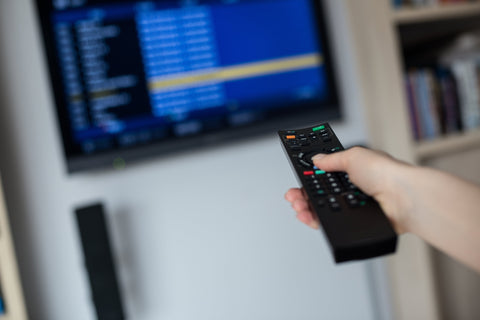HDR, or High Dynamic Range, is a technology that produces images with high contrast between the bright and dark areas—and it is one of the greatest features of modern 4K TV’s. The result is more lifelike images, without subtle detail loss.
So, what is HDR TV able to do? Put simply, HDR is able to preserve the gradation from light to dark in ways that Standard Dynamic Range (SDR) cannot. HDR signals provide information about colour and brightness across a much broader range.
Nowadays, most modern TVs have HDR technology to some extent, but it can be hard to guess whether you’re getting the best quality for your money. Well, we’re here to help answer the question: what is HDR TV? And show you how to optimise your TV's HDR image display settings.

HDR10, HDR10+ and Dolby Vision
As we know, High Dynamic Range enhances picture quality, but there are actually multiple HDR formats to choose from. So, what is HDR in video and how do we know which format is best?
Let us break it down for you.
The most widely used HDR formats are HDR10, HDR10+ and Dolby Vision. HDR10 is the most basic of the three and any modern 4K TV will support it. HDR10+ and Dolby Vision are two more advanced formats, and TVs can either support both or just one—they’re not mutually exclusive.
All of these formats have excellent peak brightness maximum. As we know, it is easy to find TVs that support HDR10—however HDR10+ and Dolby Vision are also pretty commonly found. So, what is Dolby Vision and HDR10+?
Well, unlike HDR10, both use dynamic metadata, which automatically adjusts brightness and tone mapping per scene to best suit the content you are watching each time. HDR10 uses static metadata which does not adjust throughout the duration of the content you are watching.
CHT Solutions stocks a range of new models of AV receivers that support Dolby Vision. Our range of supporting equipment means you can keep your modern TV and add in an innovative AV receiver and more powerful speakers to elevate your viewing experience. Because what is Dolby Vision without great audio to compliment it!
Tips for optimising HDR settings on your TV
So, what is HDR in video? What is 4K HDR able to offer? And how do you get the best out of these features?
Well, the first thing to keep in mind when altering picture display settings on your TV is that, generally, whatever tweaks you make to the picture will usually only apply to the current HDMI input. This can actually be a benefit for different sources, depending on your needs—however some TVs do have the option to apply the changes across all HDMI channels.
One of the quickest and most effective ways to calibrate your TV is to select the Movie/Cinema picture preset, as this preset generally has the best colour settings.
Disabling image manipulation features such as Dynamic Contrast, Energy Saving and Motion Smoothing may also be a good idea, so that you are able to watch content that is as accurate to the original content as possible.
The time you spend tweaking these image settings is super beneficial—you can even have different input settings for day and night—plus, you’ll usually only have to set them once for each source. Dolby Vision helps with this as it will automatically switch to great preset settings when watching compatible content.

Colour gamuts and their role in reproducing accurate colours
The colour gamut describes the range of hues in the spectrum of colours that can be reproduced on an output device. The best TVs with HDR colour gamut, or Wide Colour Gamut, content are able to offer an exceptional viewing experience.
sRGB is one of the most common colour standards around. From cameras to TVs, you’ve probably encountered it before, and for good reason. Its input and output experience very little lag and few discrepancies, making it ideal for widespread use.
BT.2020, or Rec. 2020, is a set of specifications recommended by the International Telecommunications Union (ITU) as the standard for Ultra HD projectors and TVs, and any other equipment required for their broadcasting. It goes without saying that it’s impressive.
It is widely thought that TVs handle HDR content significantly better than projectors. While even the best projectors don’t have great brightness levels, there are colour standards specifically designed for HDR support in projectors.
Such a colour standard is DCI-P3. This is a colour standard that is compatible with all digital projectors on the cinematic level—essentially, it is the colour standard for the film industry.
Needless to say, wider range HDR colour gamut 4K TVs have fast become desired in any modern home setup—and for good reason. There are a range of stunning colour standards that are designed to work best for different needs, so it’s a good idea to do your research before you make a decision.

How can CHT Solutions help?
What is 4K HDR to us? Well, at CHT Solutions, we are passionate about helping you achieve your dream home entertainment setup—and utilising HDR is the perfect way to do it.
If you’re looking to level up your viewing experience at home, we have a range of AV receivers, home theatre projectors, amplifiers, speakers, and so much more, to help you do just that. We’re always happy to help ensure you’re choosing the right equipment for your needs— reach out to our friendly staff for any of your queries, or shop the range for yourself online today!






